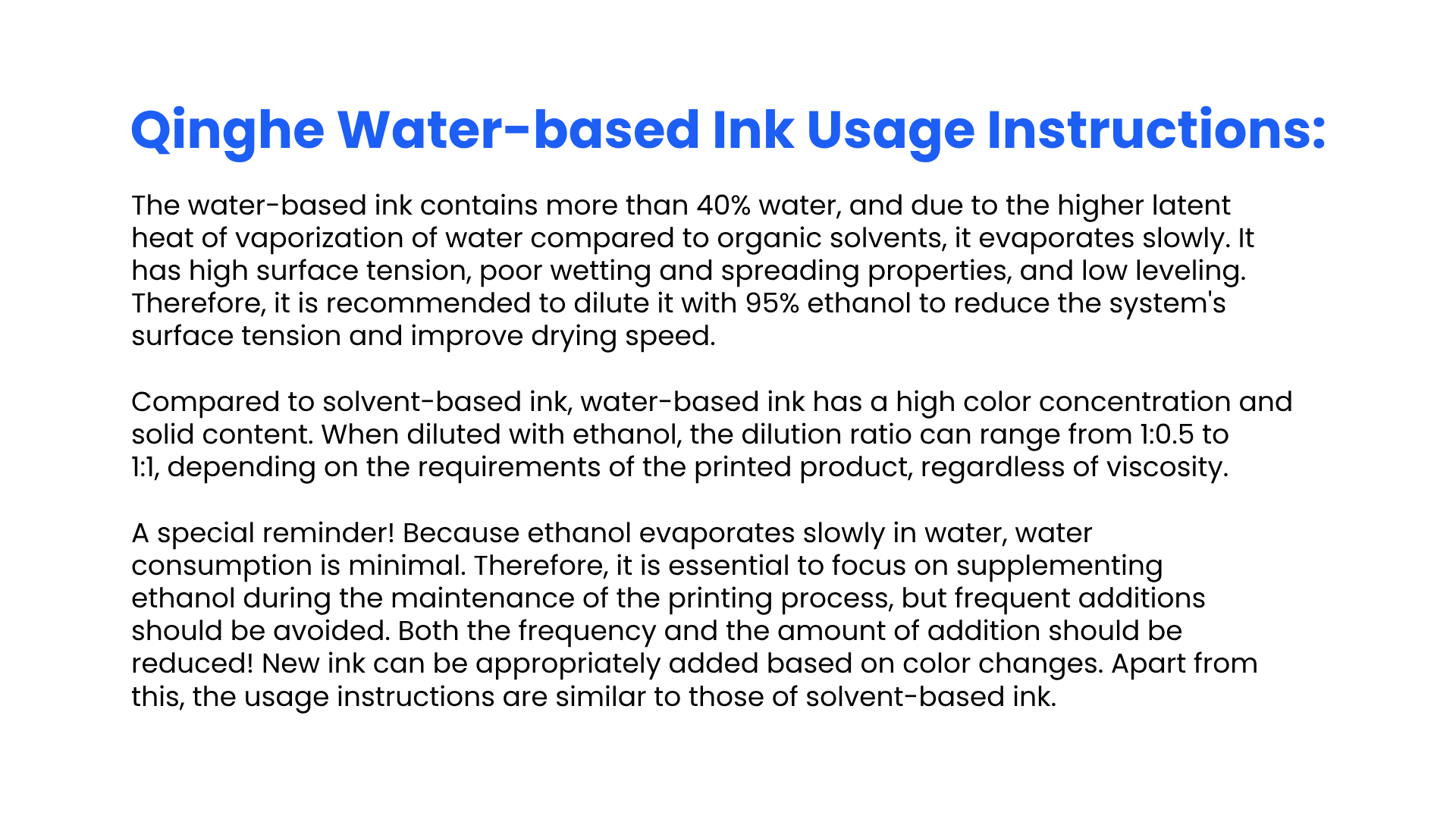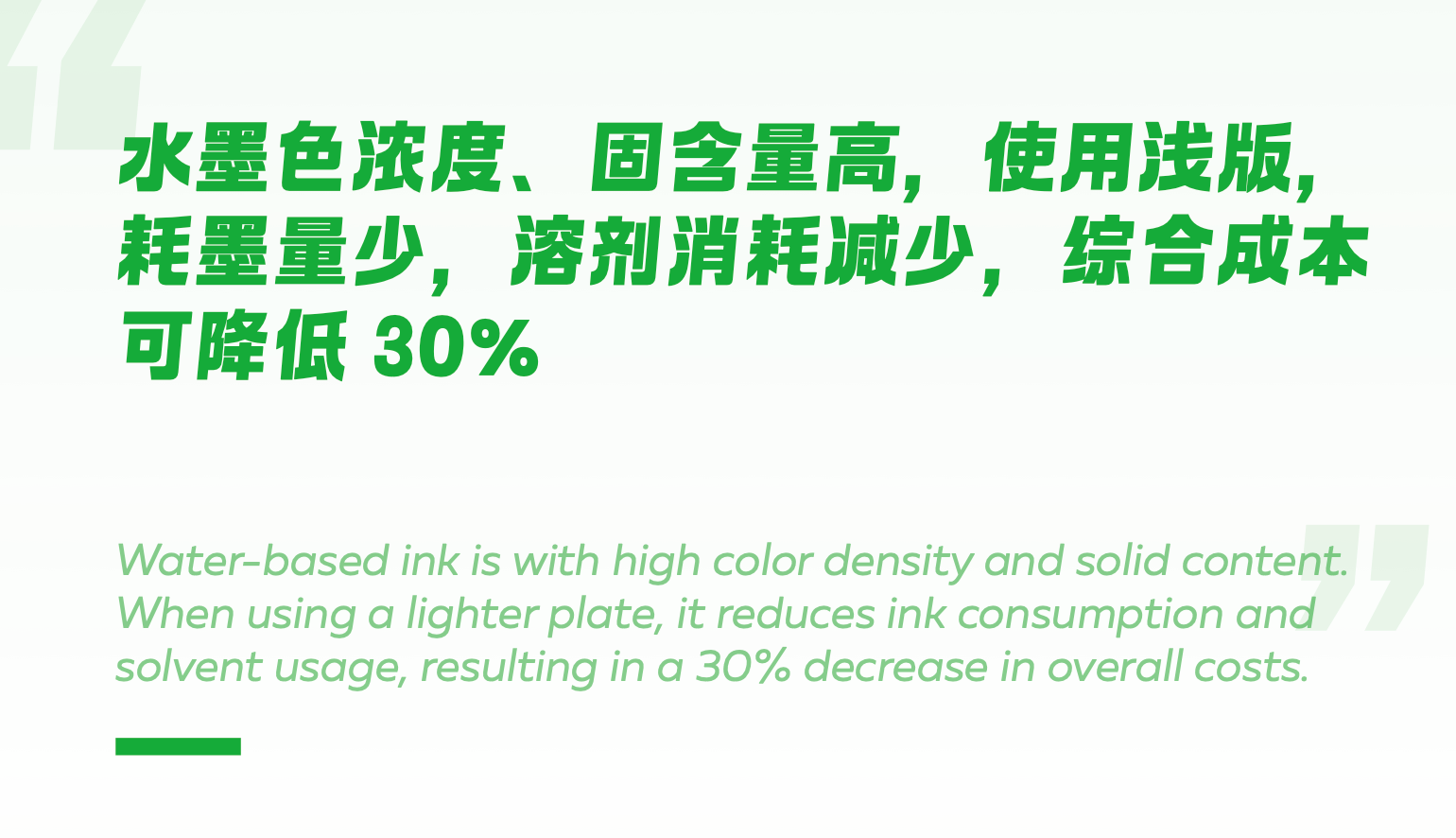What is Water-Based Ink?

A Closer Look at Water-Based Ink
Water-based ink is a type of ink that uses water as a solvent, making it environmentally friendly and safe for use in various printing applications. It consists of pigments or dyes suspended in water, allowing for vibrant and long-lasting colors without harmful chemicals.
Benefits of Printing with Water-Based Ink
Water-based inks are gaining popularity in the printing industry due to their numerous advantages. Here's how they stand out:
- Vibrant Color Reproduction: Water-based inks deliver exceptional color quality, ensuring sharp and accurate representation of the intended design.
- Soft Hand Feel: Unlike traditional inks that can leave a thick, plastic-like residue, water-based inks are dry, thin, and flexible, resulting in a comfortable and natural feel on fabrics like garments and textiles.
- Versatility Across Substrates: These inks effectively adhere to a broader range of materials, making them suitable for printing on paper, plastic, wood, and some fabrics.
- Sustainable Choice: Water-based inks are formulated with minimal harmful chemicals or volatile organic compounds (VOCs). This translates to reduced environmental impact during production, use, and disposal.
- Odorless and Clean Printing: Water-based inks eliminate the strong and unpleasant smells often associated with solvent-based inks, creating a more pleasant printing environment and minimizing potential health risks.
In conclusion, water-based inks offer a compelling combination of quality, versatility, and environmental consciousness, making them a valuable choice for printers seeking sustainable and effective solutions.
Flexo Water Based Ink: The Future of Printing
Flexo water-based ink is gaining popularity as the future of printing due to its ability to deliver high-quality results while being environmentally friendly. This innovative ink formulation allows for precise and intricate designs with minimal environmental impact, making it a preferred choice for forward-thinking printers.
Understanding Solvent-Based Ink

Solvent-based ink has pros and cons. On one hand, solvent-based ink offers excellent adhesion to non-porous substrates and dries quickly, making it ideal for high-speed printing applications. However, using volatile organic compounds (VOCs) in solvent-based ink can pose health and environmental risks. Additionally, the need for special ventilation and disposal requirements adds to the overall cost of using solvent-based ink.
The Pros and Cons of Solvent-Based Ink
Solvent-based ink provides vibrant colors and excellent durability, making it popular for outdoor signage and packaging materials. However, releasing VOCs during printing can contribute to air pollution and pose health risks to workers. Furthermore, the need for specialized equipment for handling and disposing of solvent-based inks adds to the overall environmental impact.
Eco-Friendly Alternatives to Solvent-Based Ink
As awareness about environmental issues grows, many companies turn to eco-friendly alternatives to solvent-based ink. These alternatives include UV-curable inks that eliminate VOC emissions and water-based inks that offer a more sustainable option for various printing applications.
The Environmental Impact of Solvent-Based Ink
Solvent-based ink contributes significantly to air pollution due to the release of VOCs during the printing process. In addition, improper disposal practices can lead to soil and water contamination, further exacerbating environmental concerns associated with solvent-based ink usage.
Printing Performance

Water-based ink has proven to be a game-changer when it comes to print quality. Water-based ink's vibrant and sharp colors are unmatched, giving your prints a professional and eye-catching finish. Unlike solvent-based ink, water-based ink doesn't leave behind any harsh odors or chemicals, making it a top choice for those who prioritize a clean and safe working environment.
1. Print Quality Comparison: Water-Based vs. Solvent-Based
The difference in print quality between water-based and solvent-based ink is undeniable. Water-based ink delivers vivid and crisp prints that are free from harmful chemicals or odors, making it the ideal choice for environmentally conscious businesses. On the other hand, solvent-based ink may produce prints with a slightly stronger color saturation but often has an unpleasant odor and poses health risks to workers.
2. Flexibility and Versatility in Printing: Water-Based vs. Solvent-Based
Water-based ink takes the lead once again when it comes to flexibility and versatility in printing. This type of ink can be used on various substrates such as paper, cardboard, fabric, and more, making it an ideal choice for businesses that require diverse printing capabilities. Solvent-based ink may offer some degree of flexibility but often comes with limitations in terms of substrate compatibility.
3. The Durability Factor: Water-Based Ink vs. Solvent-Based Ink
In terms of durability, both water-based and solvent-based inks have their own strengths and weaknesses. While solvent-based ink may offer slightly better resistance to fading and abrasion, water-based ink has made significant advancements in durability over the years, especially when used with advanced printing techniques such as flexography.
Environmental Impact

When it comes to sustainable printing solutions, water-based eco solvent ink is a game-changer. This innovative ink formula offers a more environmentally friendly alternative to traditional solvent-based inks, reducing harmful emissions and minimizing the carbon footprint of printing processes. With its low VOC content and biodegradable properties, water-based eco solvent ink is paving the way for a greener future in the printing industry.
Water Based Eco Solvent Ink: A Sustainable Printing Solution
Water-based eco solvent ink is revolutionizing how we approach printing, offering a sustainable solution that minimizes environmental impact. Using natural solvents and renewable resources, this eco-friendly ink reduces air pollution and promotes a healthier working environment for printers. With its ability to deliver vibrant colors and high-quality prints without compromising sustainability, water-based eco solvent ink is truly a game-changer in printing.
The Eco-Friendly Benefits of Water-Based Ink
Printing with water-based ink offers a plethora of eco-friendly benefits. From significantly lower VOC emissions to reduced energy consumption during the drying process, water-based ink offers a more sustainable option for environmentally conscious businesses. In addition, its biodegradable nature ensures that it does not contribute to long-term environmental pollution, making it an ideal choice for those looking to minimize their ecological footprint without sacrificing print quality.
Solvent-Based vs. Water-Based: The Environmental Debate
The environmental debate surrounding solvent-based vs. water-based inks is a hot topic within the printing industry. While solvent-based inks have historically been associated with higher levels of air pollution and harmful emissions, water-based inks offer a more sustainable alternative with lower environmental impact and biodegradable properties. As businesses strive to adopt greener practices, shifting towards water-based inks becomes increasingly imperative for reducing overall ecological harm.
Understanding Solvent-Based Ink

The Pros and Cons of Solvent-Based Ink
Solvent-based ink is a common choice in the printing industry, but it has benefits and drawbacks. Let's explore these factors:
Advantages:
- Fast Drying: Solvent-based inks dry rapidly, ideal for high-speed printing. This is crucial for applications like industrial printing and production lines.
- Vibrant Colors: The solvent carriers allow for deeper color saturation, resulting in richer and more vivid prints than other ink types.
Disadvantages:
- Health and Environmental Concerns: These inks contain volatile organic compounds (VOCs) which can harm human health through inhalation and contribute to air pollution.
- Special Handling Requirements: Due to the presence of VOCs, proper ventilation and specific disposal methods are necessary when using solvent-based inks, increasing operational costs.
While solvent-based inks offer speed and color quality advantages, their environmental and health risks, along with additional handling requirements, necessitate careful consideration before implementing them in printing processes.
Eco-Friendly Alternatives to Solvent-Based Ink
In response to the environmental concerns surrounding solvent-based ink, eco-friendly alternatives have emerged. These alternatives aim to reduce VOC emissions and minimize the impact on air quality while maintaining the desired printing quality. Some examples include eco-solvent inks that use renewable resources and bio-solvents derived from natural materials.
The Environmental Impact of Solvent-Based Ink
The environmental impact of solvent-based ink is significant due to its VOC content, which contributes to air pollution and poses health risks to workers in printing facilities. Additionally, improper disposal of solvent-based ink can contaminate soil and water sources, further exacerbating environmental damage.
Applications and Industries

Water-based ink has found a strong foothold in textile printing due to its eco-friendliness and versatile nature. It ensures vibrant and long-lasting colors while also being safe for the environment, making it an ideal choice for clothing manufacturers looking to reduce their ecological footprint.
Water-Based Ink in Textile Printing
Water-based ink has revolutionized the textile printing industry by offering a sustainable alternative to traditional solvent-based inks. Its ability to adhere to various fabrics while maintaining color vibrancy has made it a popular choice for clothing manufacturers worldwide. Additionally, the absence of harmful chemicals makes it safe for workers and the environment, aligning with the growing demand for eco-friendly practices in the fashion industry.
Exploring Water-Based Fabric Ink
Water-based fabric ink is designed to provide excellent adhesion and color retention on various textiles, including cotton, polyester, and blends. This type of ink allows intricate designs and patterns to be printed precisely, offering endless creative possibilities for garment decoration. Its fast-drying nature also increases production efficiency, making it a favorite among textile printers.
The Versatility of Water-Based Ink in Various Industries
Beyond textile printing, water-based ink has proven its versatility in various industries, such as packaging, paper products, and promotional items. Its ability to deliver high-quality prints without compromising on environmental impact has led to its widespread adoption across different sectors. As more businesses prioritize sustainability, water-based ink remains the go-to choice for responsible printing solutions.
Printing Performance

When it comes to print quality, water-based ink offers vibrant and crisp results that are hard to match. The colors appear more vivid, and the details are sharper, making it a top choice for high-quality printing projects. In contrast, solvent-based ink may struggle to achieve the same level of clarity and vibrancy, often resulting in duller and less defined prints.
Print Quality Comparison: Water-Based vs. Solvent-Based
The flexibility and versatility of water-based ink in printing is unmatched. It adheres well to various substrates, including paper, cardboard, fabric, and more, making it a go-to option for many printing applications. On the other hand, solvent-based ink may have limitations in terms of substrate compatibility, requiring specific materials for optimal results.
Flexibility and Versatility in Printing: Water-Based vs. Solvent-Based
When it comes to durability, water-based ink holds its ground admirably. It can withstand regular wear and tear without compromising print quality or colorfastness, making it an ideal choice for items that will be frequently handled or washed. In contrast, solvent-based ink may exhibit signs of fading or cracking over time, especially when exposed to harsh conditions.
The Durability Factor: Water-Based Ink vs. Solvent-Based Ink
When it comes to durability, water-based ink has often been considered inferior to solvent-based ink. However, recent technological advancements have led to water-based inks that are just as durable, if not more so, than their solvent-based counterparts. These new formulations offer excellent resistance to fading, cracking, and abrasion, making them a viable option for various applications, including outdoor signage and apparel printing. Many industry experts believe that water-based ink is the future of printing due to its ability to combine durability with eco-friendliness. So, if you're still on the fence about switching from solvent-based ink, it might be time to reconsider and explore the durable possibilities of water-based ink.
Making the Switch: The Benefits of Water-Based Ink

If you're considering
switching to water-based ink, you're in for a treat! Not only does water-based ink offer vibrant and long-lasting prints, but it's also eco-friendly and safe to use. With the rise of flexo water based ink, the future of printing is looking brighter than ever.
Choosing the Right Ink for Your Printing Needs
Water-based ink is a clear winner when choosing the right ink for your printing needs. Whether in textile printing or any other industry, its versatility and quality make it ideal for any project. Say goodbye to harsh chemicals and hello to stunning prints with water-based ink.
Exploring the Future of Printing with Water-Based Ink
As we continue exploring innovative printing solutions, water-based ink is paving the way for a more sustainable and environmentally friendly future. With advancements like water based eco solvent ink and water based fabric ink, there's no limit to what can be achieved with this revolutionary printing technology.

